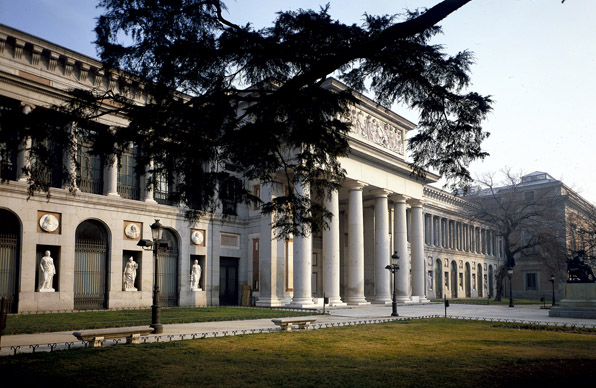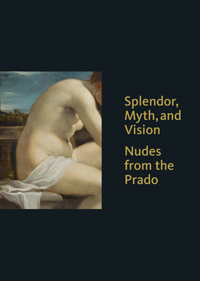
June 11–October 10, 2016
the museo nacional del prado and the clark art institute
© Photographic Archive, Museo Nacional del Prado, Madrid
Renaissance and Baroque works of art have always held an important place in the history of the Clark Art Institute. The Clark’s collection of such works, however, is modest in comparison with that of the Museo Nacional del Prado in Madrid. The Prado collection—a truly expansive one of around 7,600 paintings, 1,000 sculptures, 4,800 prints, and 8,200 drawings—mirrors the collecting history of a preeminent royal court; its treasured works span many centuries and bear a widespread provenance.
The Real Museo de Pinturas, known today as the Museo Nacional del Prado, first opened its doors to the public in the fall of 1819. Inaugurated during the reign of Ferdinand VII (reigned 1808; 1813–33), Spain’s new national museum was intended to “beautify the capital of the realm and add to the luster and splendor of the nation.” In addition, the museum sought to “supply lovers of art with the most honest pleasure, and students of the arts of drawing with the most effective means to make rapid progress.”
The location, architecture, and collections of the Prado reflect these lofty ambitions. The site chosen for the national museum was Madrid’s fashionable Paseo del Prado, a broad boulevard that had grown over the eighteenth century to include the Royal Porcelain Factory, the Royal Botanical Garden, the Royal Observatory, and other cultural and scientific institutions. The building selected for the museum was the former Royal Cabinet of Natural History, a stately neoclassical structure designed in 1785 by the esteemed architect Juan de Villanueva.
At the outset, the Real Museo del Prado was home to 1,500 works of art drawn from the Spanish Royal Collections. During its first decade, these numbers grew rapidly as paintings, sculptures, works on paper, and decorative arts traveled to Madrid from royal palaces throughout Spain. Like national museums elsewhere in Europe, galleries at the Real Museo were organized by national school. Spanish paintings enjoyed pride of place, with canvases by the Golden Age artists Velázquez, Murillo, and Ribera supplying more than half of the works initially on view. The Prado’s strong institutional prehistory provides a significant context for this exhibition and serves as a compelling record of the intriguingly diverse collecting habits of the Spanish royalty.
Splendor, Myth, and Vision: Nudes from the Prado marks the second phase in an exchange between the Prado and the Clark, the first being the 2010 loan to the Prado of the Clark’s fine collection of paintings by Pierre-Auguste Renoir. Presented in a suite of galleries in the Prado steps away from works by Titian, Rubens, and Velázquez, Pasión por Renoir: La colección del Sterling and Francine Clark Art Institute was a great success. By lending the twenty-eight pictures in this exhibition to the Clark in return, the Prado is affording U.S. audiences an opportunity to see a set of splendid works in the context of the Clark’s own rich holdings. This exchange has provided audiences in both Spain and the United States the chance to explore not only the paintings that have traveled but also the history of institutional collecting in public and private museums of very different origins.
A fully illustrated catalogue accompanies the exhibition, with an essay by Javier Portús on the Spanish royal taste in collecting and the role of the sala reservada, as well as a contemporary response to understanding the nude in Renaissance and Baroque painting by Jill Burke. The catalogue is published by the Clark and distributed by Yale University Press. Call the Museum Store at 413 458 0520 to order.



